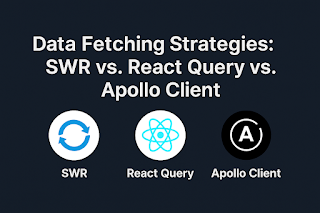Progressive Web Apps (PWA): How They Work & Why They Matter
Progressive Web Apps (PWAs) combine the best of web and mobile apps to deliver fast, reliable, and engaging user experiences. As the web evolves, PWAs have emerged as a powerful solution for developers looking to build cross-platform apps that work seamlessly across devices.
In this blog, we’ll break down how PWAs work, their core features, and why they matter in today’s digital ecosystem.
What is a PWA?
A Progressive Web App is a type of web application that uses modern web capabilities to deliver an app-like experience to users. It’s accessible via a browser but can also be installed on a user’s device, like a native app.
Core Features of a PWA
Responsive Design Works across all devices—mobile, tablet, and desktop.
Connectivity Independence Uses Service Workers to enable offline functionality and background sync.
App-Like Interface Feels like a native app with smooth interactions and immersive UI.
Installable Can be added to the home screen without going through app stores.
Push Notifications Supports re-engagement through web push notifications.
Secure by Default Always served over HTTPS to ensure content integrity and safety.
How PWAs Work
A typical PWA setup includes:
Web App Manifest: A JSON file that provides metadata (name, icon, theme) for install prompts.
Service Worker: A background script that intercepts network requests, caches assets, and enables offline mode.
HTTPS Hosting: Ensures the app is secure and trusted.
// Sample service worker registrationif ('serviceWorker' in navigator) {navigator.serviceWorker.register('/service-worker.js').then(() => console.log("Service Worker Registered!"));}
Why PWAs Matter
Lower Development Costs One codebase for web and mobile reduces complexity.
Improved Performance Fast loading, even on slow networks.
Better Engagement With push notifications and install prompts, users are more likely to return.
Platform Independence Works across Android, iOS (with limitations), and desktop environments.
SEO Friendly Unlike native apps, PWAs can be indexed by search engines.
Real-World Examples
Twitter Lite Reduced data usage by 70%, saw a 65% increase in pages per session.
Pinterest Increased time spent on site by 40%, and ad revenue by 44%.
Conclusion
PWAs offer a sweet spot between the flexibility of the web and the power of native apps. They’re fast, engaging, and cost-effective—making them a strong choice for modern application development. As front-end developers grow toward solution architecture, understanding PWAs becomes essential for building scalable and user-centric digital products.
Have you built a PWA before, or are you planning to integrate one into your next project?




Comments
Post a Comment